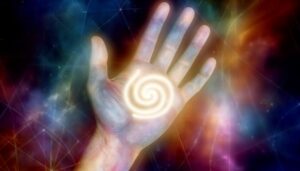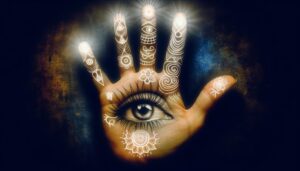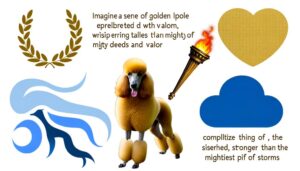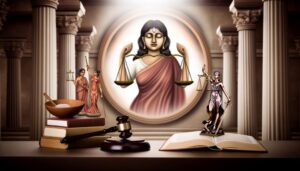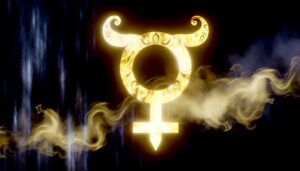What Is the Moon and Sun Symbol Meaning?
The moon and sun, revered celestial symbols, encapsulate profound meanings across cultures. The moon, tied to femininity and intuition, symbolizes life's rhythms through its phases.
The sun, embodying masculine energy, signifies vitality and creation. This cosmic dance reflects the dualities of light and dark, inspiring myth and ritual, while guiding spiritual journeys.
Through art, the moon's crescent form evokes renewal and hidden truths, while the sun's omnipresent light represents clarity and enlightenment. This intricate symbolism underscores the delicate balance of opposing yet harmonious forces.
Continue exploring to uncover deeper layers of interpretive richness and cosmic resonance.
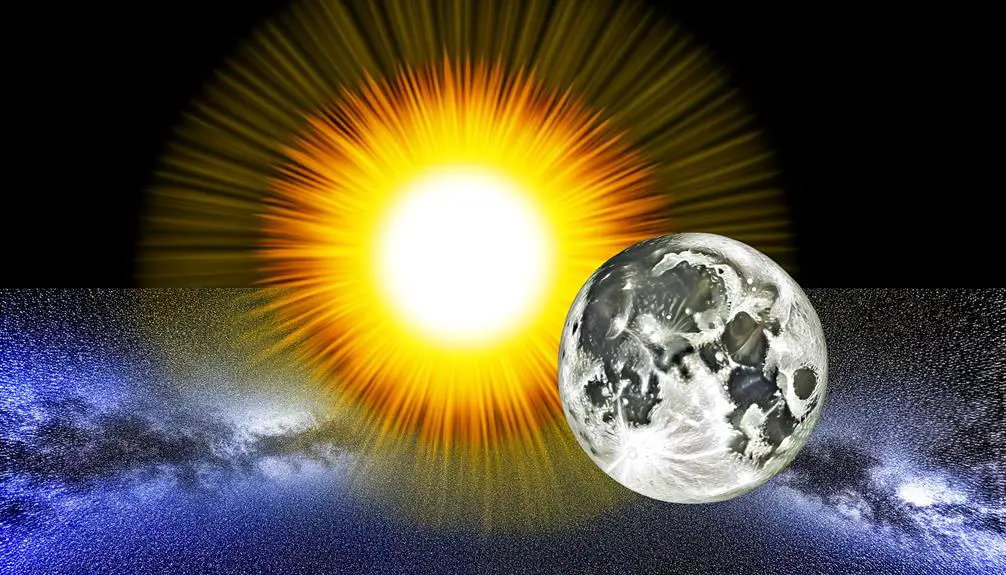
Key Takeaways
- The moon symbolizes femininity, intuition, and the cyclical nature of life.
- The sun represents masculinity, energy, and the life-giving force.
- Together, the moon and sun embody dualities like light and dark, balance, and unity.
- In art, the moon signifies renewal and hidden truths, while the sun signifies clarity and creation.
- Both celestial bodies are revered in spiritual and religious contexts, symbolizing divine feminine and masculine energies.
Historical Significance
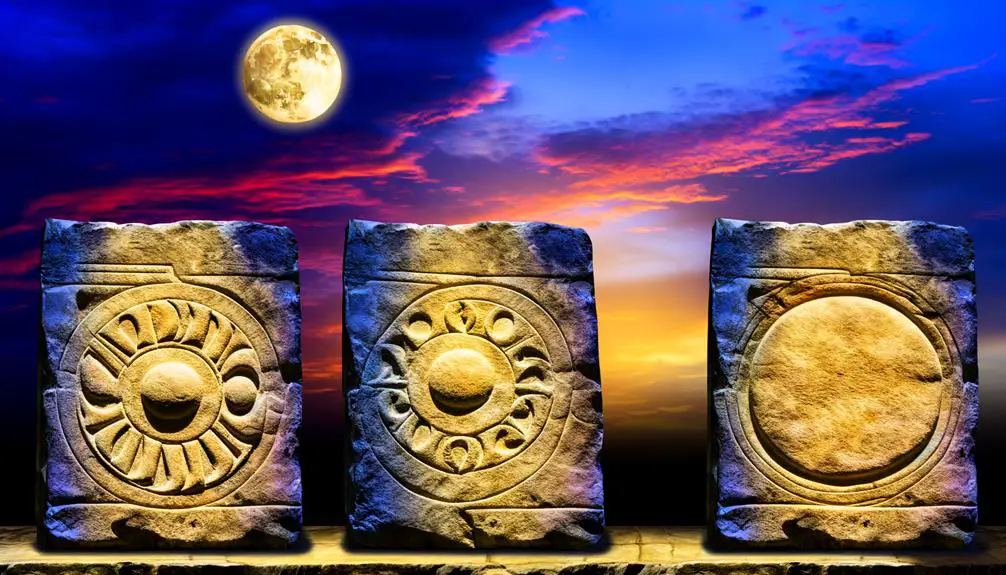
Throughout history, the moon and sun have emerged as profound symbols, embodying a myriad of mystical interpretations and symbolic meanings that transcend cultures and epochs.
The moon, often associated with the feminine, represents intuition, cycles, and the subconscious. Its waxing and waning phases mirror the rhythmic nature of life itself, symbolizing growth, decay, and renewal.
Conversely, the sun stands as the quintessential masculine symbol, embodying power, energy, and enlightenment. Its unwavering light and regularity depict constancy and the triumph of knowledge over ignorance.
Together, these celestial bodies encapsulate the duality inherent in existence—balancing light and dark, order and chaos. This cosmic dance has inspired countless myths, rituals, and philosophical musings, underscoring their enduring historical significance.
Cultural Interpretations
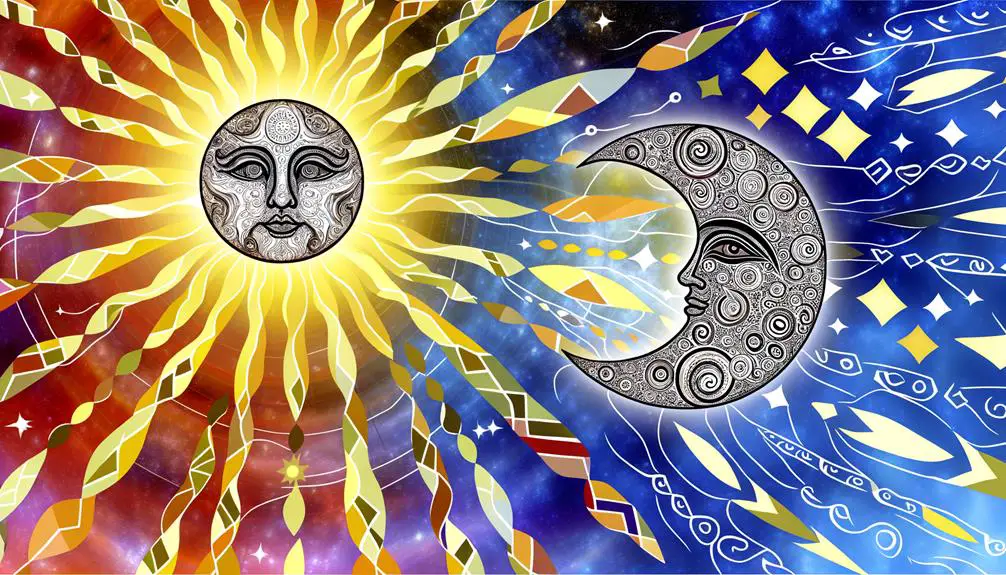
In diverse cultures, the moon and sun transcend their physicality, emerging as potent symbols imbued with rich mythological and spiritual significance.
The moon, often cloaked in mystique, symbolizes femininity, intuition, and the cyclical nature of time, mirroring the ebb and flow of human emotions.
Contrastingly, the sun radiates as a beacon of masculinity, energy, and enlightenment, representing the life force that drives existence.
These celestial bodies are not mere cosmic entities but revered icons, embodying dualities such as light and dark, life and death, and order and chaos.
Through intricate rituals and symbolic art, societies convey their reverence, embedding the moon and sun within the core of human consciousness, guiding spiritual journeys and cultural narratives across generations.
Mythological Roles
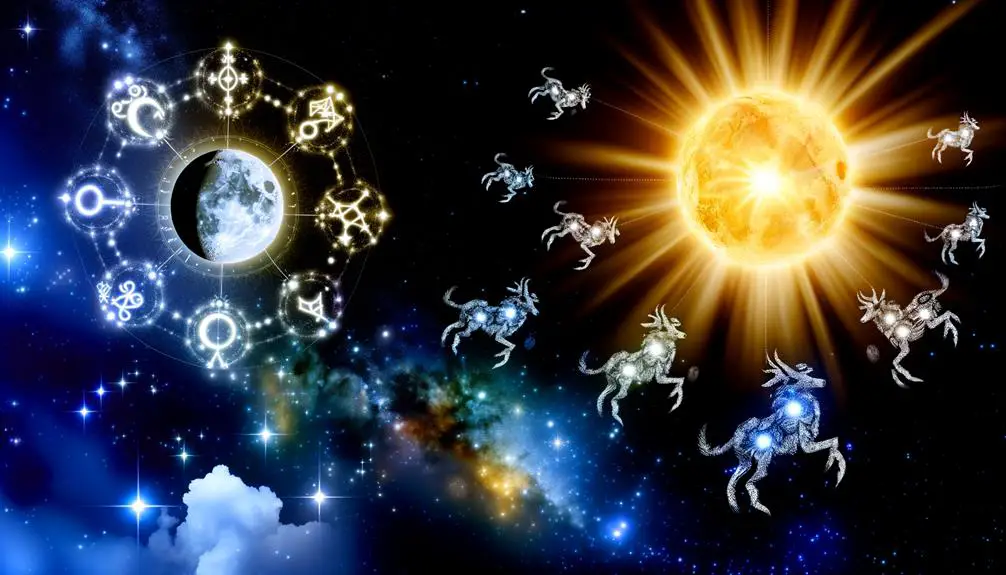
Within the mythological tapestry of ancient civilizations, the moon and sun occupy revered positions, embodying divine entities whose narratives shape cosmological understanding and cultural values.
The sun, often perceived as a powerful god, symbolizes importance, authority, and the life-giving force, manifesting in deities such as Ra in Egyptian lore and Helios in Greek mythology.
Conversely, the moon, frequently depicted as a goddess, epitomizes mystery, transformation, and the cyclical nature of existence, seen in figures like the Roman Luna and the Greek Selene.
These celestial bodies, through their mythological roles, provide a dualistic framework that reflects the balance of light and darkness, order and chaos, thereby weaving a profound symbolic dichotomy into the fabric of human consciousness.
Religious Symbolism
Emerging from the depths of human spirituality, the moon and sun transcend their physical manifestations, assuming profound roles as sacred symbols that convey the intricate interplay between the divine and the mortal.
The moon often embodies the divine feminine, representing intuition, mystery, and the cyclical nature of existence.
In contrast, the sun is a powerful emblem of the divine masculine, radiating strength, clarity, and life-giving energy.
These celestial bodies act as metaphysical bridges, illuminating the path between the earthly and the divine.
In various religious traditions, such as Hinduism and Buddhism, their symbolism underscores the duality and unity inherent in the cosmos, guiding adherents towards enlightenment and spiritual harmony.
Consequently, they are revered as cosmic luminaries in the spiritual journey.
Artistic Representations
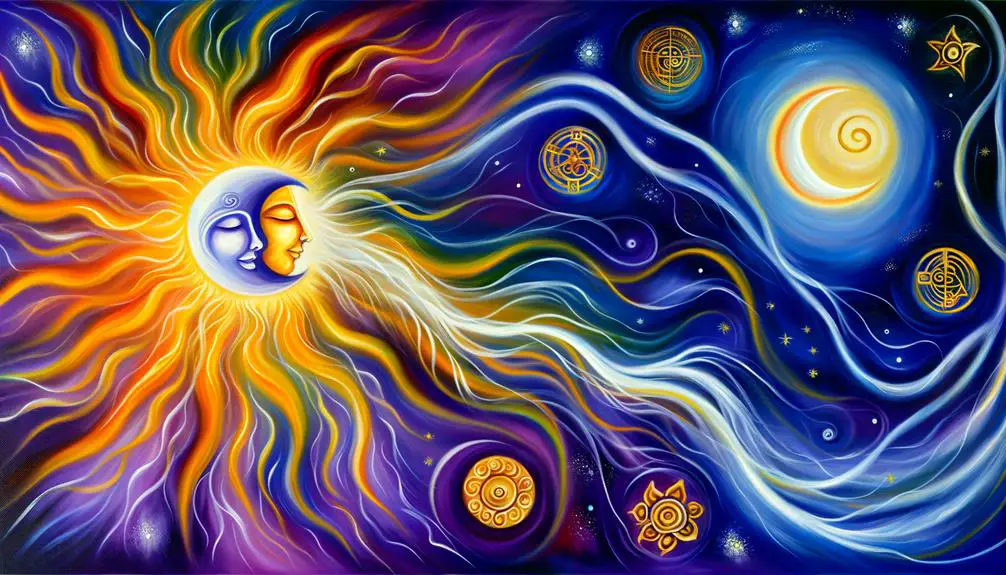
Throughout history, countless artists have woven the moon and sun into their masterpieces, imbuing their works with layers of symbolic meaning and spiritual resonance.
The moon, often portrayed in ethereal hues, symbolizes the subconscious, dreams, and the feminine mystique. Its crescent form whispers of cycles, renewal, and hidden truths.
Conversely, the sun, depicted in radiant, golden tones, embodies essentiality, enlightenment, and the divine masculine. Its omnipresent light signifies clarity, growth, and the omnipotent force of creation.
Together, their juxtaposition in art creates a celestial dance of balance and duality, merging the domains of night and day, shadow and illumination.
This cosmic interplay invites viewers to ponder the deeper mysteries of existence and the eternal rhythm of the universe.
Conclusion
In summation, the cosmic interplay between the moon and sun has captivated human consciousness across epochs, embodying dualistic principles and serving as potent symbols in myriad cultures, mythologies, and religions.
Their artistic depictions, laden with esoteric meaning, continue to inspire and mystify.
Like the contrasting forces of the Jedi and Sith, the moon and sun represent the eternal dance of light and shadow, order and chaos—an archetypal narrative woven into the very fabric of existence.

